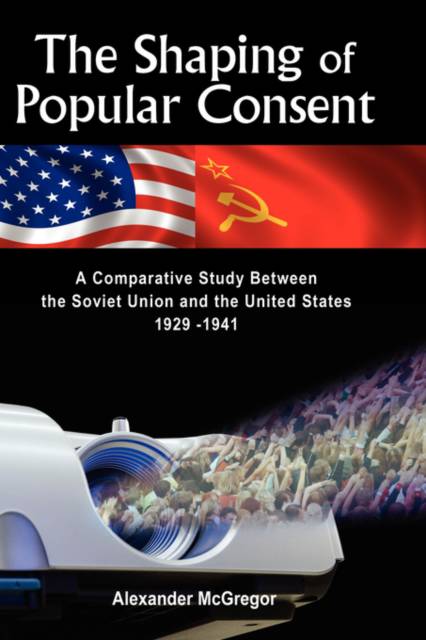
- Retrait gratuit dans votre magasin Club
- 7.000.000 titres dans notre catalogue
- Payer en toute sécurité
- Toujours un magasin près de chez vous
- Retrait gratuit dans votre magasin Club
- 7.000.0000 titres dans notre catalogue
- Payer en toute sécurité
- Toujours un magasin près de chez vous
The Shaping of Popular Consent
A Comparative Study of the Soviet Union and the United States 1929-1941
Alexander McGregor
Livre relié | Anglais
135,95 €
+ 271 points
Description
This book questions the view of the current orthodoxy which argues that the Soviet Union and the United States were binary opposites in the 1930s. The Shaping of Popular Consent presents a comparative analysis of one specific facet of the USSR and the US, namely the manner in which their ruling elites sought to win popular consent. A key dimension in the analysis of any political order, this issue recommends itself precisely because the assumption that, in this the two were quite dissimilar, is the virtual point of departure for the current thinking. To sharpen the focus of the comparison, the book concentrates on the role of the visual arts and the manner and extent to which those in power employed them to attempt to win popular consent. Therefore, this book poses two questions. Firstly, to what extent did the ruling elites in both the USSR and the US believe they needed the people's faith/trust in the system? Secondly, different as the two societies were, to what extent might they have employed similar use of visual cultural media in their attempts to win "hearts and minds"? The study explores the interwar years, specifically 1929-1941. This was an era of great upheaval in both the USSR and the US and marks the beginning of the age of mass communication. The book examines if, how, and to what extent Soviet and American cultural producers, during the years 1929-1941, employed the visual arts, cinema in particular but also painting, the plastic arts, theatre and architecture, to promote, essentially, the establishments' rights and wrongs, heroes and villains. It does so exploring both the domestic and the international scene. It illustrates that, despite giant differences between the two countries, in the way the two establishments sought to win popular consent the binary view is simply inaccurate. Perhaps more importantly, it demonstrates the need for a plethora of wide-ranging comparative studies of the Soviet Union and the United States. Indeed, through recognizing the importance of comparing and contrasting the USSR and the US, and by attempting to do just that, we might learn to better understand how, in what ways and for what purposes these two countries, so central to our understanding of the modern world, were organized. Thus, this work is genuinely comparative, inter-disciplinary and cultural. Indeed, the study is part of a vanguard movement. It is of significant value to scholars of both the USSR, Stalinism and Soviet art and the US, the New Deal and Hollywood. Finally, building on work by Noam Chomsky, Anotonio Gramsci and others such as Benedict Anderson's book Imagined Communities, the book will be of tremendous interests to many (both students and interested parties alike) who have an interest in how identities are constructed, how propaganda is manufactured and just how the (ostensibly) divergent philosophies of modern governments are represented in popular culture.
Spécifications
Parties prenantes
- Auteur(s) :
- Editeur:
Contenu
- Nombre de pages :
- 376
- Langue:
- Anglais
Caractéristiques
- EAN:
- 9781934043592
- Date de parution :
- 28-05-07
- Format:
- Livre relié
- Format numérique:
- Genaaid
- Dimensions :
- 152 mm x 229 mm
- Poids :
- 721 g

Les avis
Nous publions uniquement les avis qui respectent les conditions requises. Consultez nos conditions pour les avis.






